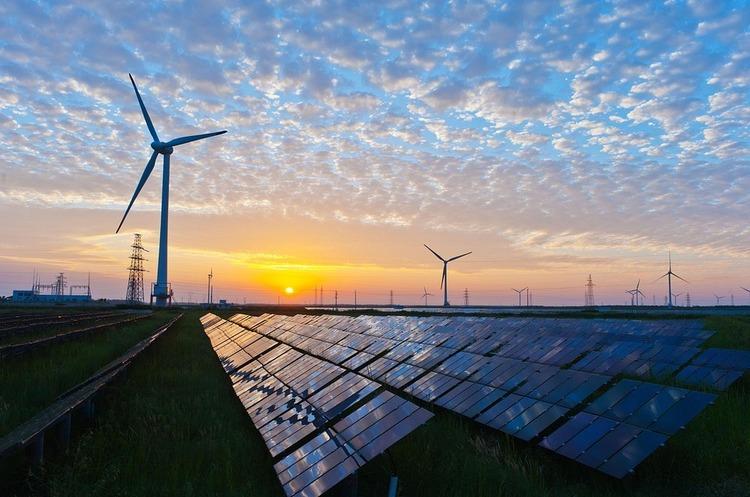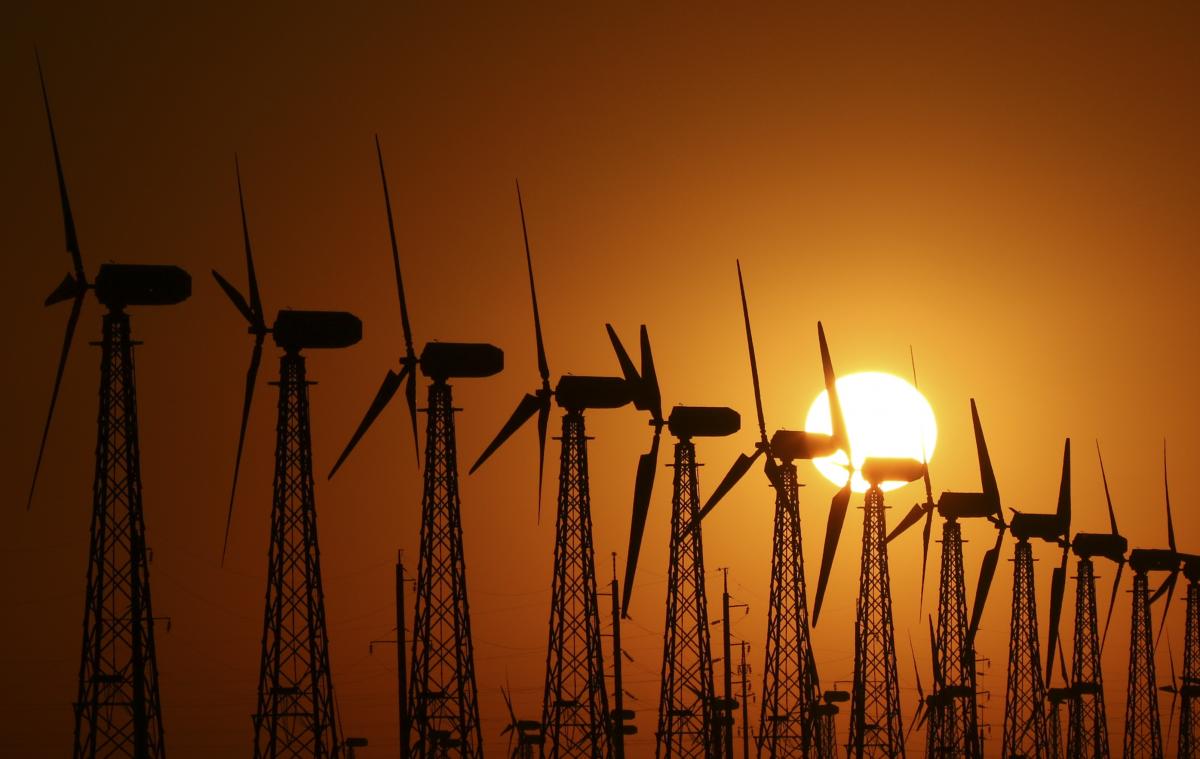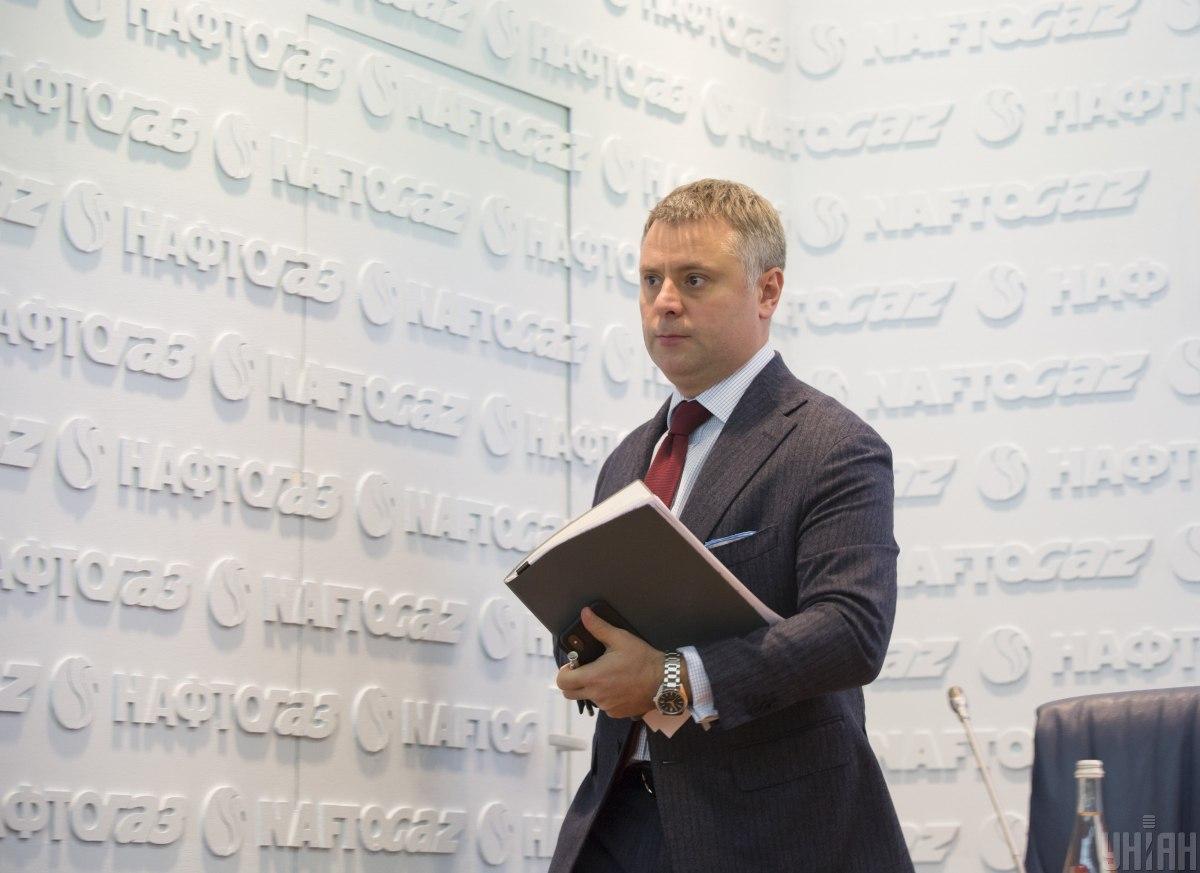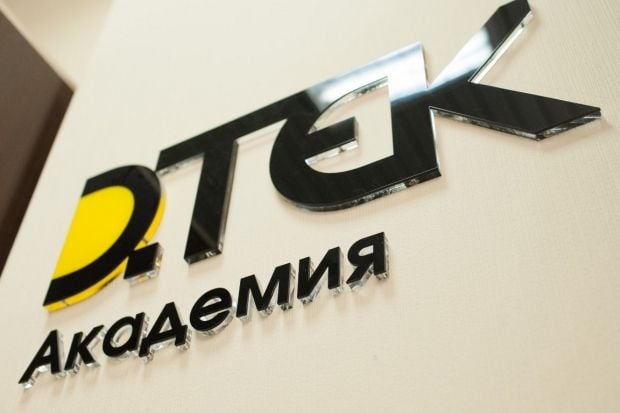
Looking for way out of "green" deadlock in Ukrainian energy sector
On the way of revolutionary changes in Ukraine's energy system, a "green-coal paradox" arose, where an increase in the share of renewables, contrary to common sense, leads to a rise in thermal energy. The solution to the issue is to direct large-scale investments in the construction of new maneuverable and accumulation capacities.
Domestic energy generation has entered a phase of revolutionary shifts that are now underway throughout the civilized world – "clean" energy derived from renewable sources is replacing "dirty" thermal power plants.
However, on the way of these changes, the so-called "green-coal paradox" arose, where an increase in the share of renewables, contrary to common sense, leads to an increase in thermal energy.
The solution to the issue is the construction of a sufficient number of new flexible and accumulation capacities, which will require multi-billion dollar investments.
The pace of construction of renewable energy facilities in Ukraine is truly amazing. Last year alone, 1.6 GW of new green generation capacities were commissioned in the country, with the total capacity rising by 22% and reaching 8.5 GW. The year 2019 set a record when 4.5 GW of renewable electricity capacities were set up.
Over the past two years, the share of renewables in country's total electricity production has risen from below 2% to 8%, and growing.
However, the expected replacement of "green" generation with obsolete and toxic heat generation is yet to take place.
While in 2018, when the boom of renewable energy in the country was just gaining momentum, the share of TPPs in total electricity generation was 37%, then by the end of 2020 it dropped to only 35%.
At the same time, the overall electricity generation in 2018-2020 decreased by almost 7% due to a drop in consumption.
The fact is that "green" energy is hardly predictable, and the generation of electricity by such power plants is unstable, since it depends on weather conditions and time of day. A sharp increase or, on the contrary, a drop in the renewable generation must be compensated for by flexible capacities in order to maintain stability of the power grid.
Key role of maneuverable capacities
In Ukraine, the role of maneuvering today is played by hydroelectric power plants, pumped storage power plants, as well as thermal power plants operating mainly on coal.
Since hydropower was involved in regulating the national energy system almost at its maximum capacities even before the "green" energy boom, by smoothing evening and morning consumption peaks, it was TPPs that took the main role in balancing the system.
At the same time, the start-up of a coal-fired power unit can take from two to nine hours. Therefore, part of the power units involved in maneuvering must constantly be in the "hot" standby mode, that is, work underloaded, so that, at the command of the power system dispatcher, at the right moment, to drastically increase generation.

Thus, an increase in the share of "green" generation in the Ukrainian energy grid leads to the use of an increasing number of TPPs, an increase in coal consumption and, accordingly, an increase in pollutant emissions into the atmosphere, which contradicts the initial idea of priority development of renewable energy sources.
And this is really a national paradox!
Trapped in the "green" paradox
The growing share of TPPs involved in balancing also leads to the need to limit generation by nuclear power plants which produce the cheapest and more environmentally friendly energy than thermal.
In the summer of 2020, some blocks of Ukrainian NPPs were being shut down so that the national energy grid could embrace the entire volume of "green" energy due to a sharp consumption drop caused by lockdown bans.
In such conditions, further development of renewable energy in Ukraine will inevitably lead to an increase in electricity tariffs, since cheap nuclear power in the general balance will be replaced by more expensive thermal power, as well as to an increase in emissions.
Ukraine is not the only country in the world that has faced such a paradox. This problem is typical for all economies that are actively developing "green" energy.
The solution to the problem is the construction of new highly maneuverable capacities, of which the most effective today are gas piston stations, whose start-up time is within 15 minutes, as well as the development of powerful energy accumulation systems.
According to acting Minister of Energy Yuriy Vitrenko, without stimulating the development of such systems, Ukraine will not be able to replace coal generation.
"We must stimulate the development of storage batteries, green hydrogen, and pumped storage facilities that can technically balance green energy. Only then will we be able to replace coal generation," Vitrenko said.
New energy accumulation technologies
Today, pumped storage power plants remain the most common energy accumulation stations in Ukraine and worldwide.

However, according to expert forecasts, in the next ten to fifteen years, energy accumulation systems based on storage batteries will be able to significantly squeeze hydropower from the pedestal, which will be due to the further technology upgrade and significant cost reductions.
According to Bloomberg, prices for lithium-ion batteries in 2020 fell to $137 per kilowatt-hour, while in 2010 their cost exceeded $1,100 per kilowatt-hour. Prices are expected to keep declining, by 2023 reaching levels below $100/kWh.
It should be noted that Ukraine has one of the largest reserves of lithium in Europe, which, unfortunately, is practically not being mined today. Also, there is not a single plant in Ukraine that would produce lithium-ion batteries, while such plants already operate in neighboring European countries.
It is predicted that by 2040 the installed capacity of energy accumulation systems in the world will reach about 1,000 GW, while in 2018 the total capacity of batteries was a modest 9 GW. Among the leaders in the development of energy accumulaiton systems are the USA, Australia, South Korea, and China.
According to the estimates by the Ukrainian energy grid operator Ukrenergo, in the next two years Ukraine should build 2 GW worth of new highly maneuverable quick start facilities, as well as at least 200 MW worth of energy storage systems, which will require about $2 billion in investment.
The implementation of this large-scale task will ensure the stability of the national energy system, taking into account further growth of the share of renewables, as well as significantly reduce the need to use thermal power plants to balance the system.
Ukrenergo, together with the European Bank for Reconstruction and Development (EBRD), is working on a project to build a 200 MW energy storage system in Ukraine. No timeframes have been revealed for the project.
In addition, the DTEK holding of oligarch Rinat Akhmetov, which owns about 80% of the country's thermal power plants, as well as the largest renewable energy facilities, plans to launch a 1 MW battery at the Zaporizhia TPP site in the spring of 2021. Investments amounted to about $1 million. If this pilot project sees success, the company will be set to build a larger energy storage system, at 50 MW.
DTEK notes that due to the unresolved issue of developing energy storage systems in Ukraine, the company has no clear understanding yet of the payback of such projects.

"Our market for ancillary services does not work as it should. We don't have normal price signals that these projects will pay off. The system needs these projects, but today there is no normal economic base for this. We decided not to wait until this economic base appears, and to try a 1 megawatt project," DTEK CEO Maksym Tymchenko told reporters.
The plans to build storage batteries were also announced by the Ukrhydroenergo SE, operator of Ukrainian hydroelectric power plants. The project is planned to be implemented jointly with USAID and the World Bank.
Finding reasonable incentives
Large foreign investors, unfortunately, today are not ready to invest in the construction of storage facilities in Ukraine. Firstly, it's due to the fact that the activity of energy storage systems in the country has not been regulated at the legislative level, and secondly, the Ukrainian electricity market is just being formed and it is almost impossible to calculate investment returns.
Even more vague are the prospects for the construction of highly maneuverable gas piston stations. By 2022, according to Ukrenergo estimates, Ukraine will have built such capacities worth about 2 GW.
Today it is practically impossible to find an investor for such a project without targeted subsidies from the government, given the unstable situation on the domestic energy market and unclear investment yield. After all, it is assumed that such stations will operate only part of the time, perhaps several dozens of hours a year, not constantly, which makes the issue of investment recouping quite obvious.
In Ukraine today, such a project could be implemented by Naftogaz of Ukraine NJSC, which produces more than 80% of all gas in the country, that is, it has direct access to fuel for such a power plant. In addition, the Naftogaz management have repeatedly stated that the company is considering the possibility of entering the power generation market.

However, if the government fails to find a solution to the economic side of the project, Naftogaz will also find it extremely difficult to attract funding for it.
Ukraine today is following the global trend of transformations in the energy sector. Now the country is faced with the task of providing the energy system with a sufficient amount of new highly mobile and storage capacities.
In addition, the country in the next two years plans to join the ENTSO-E, so it will have to demonstrate stability of its system during stress tests, which will be difficult to do without new balancing capacities being available.
The next two years will be decisive: either Ukraine is e able to develop its energy system in sync with the entire civilized world, or this process will be significantly delayed, which will be a blow both to the environment and consumers (in terms of energy bills).
Ihor Orel

